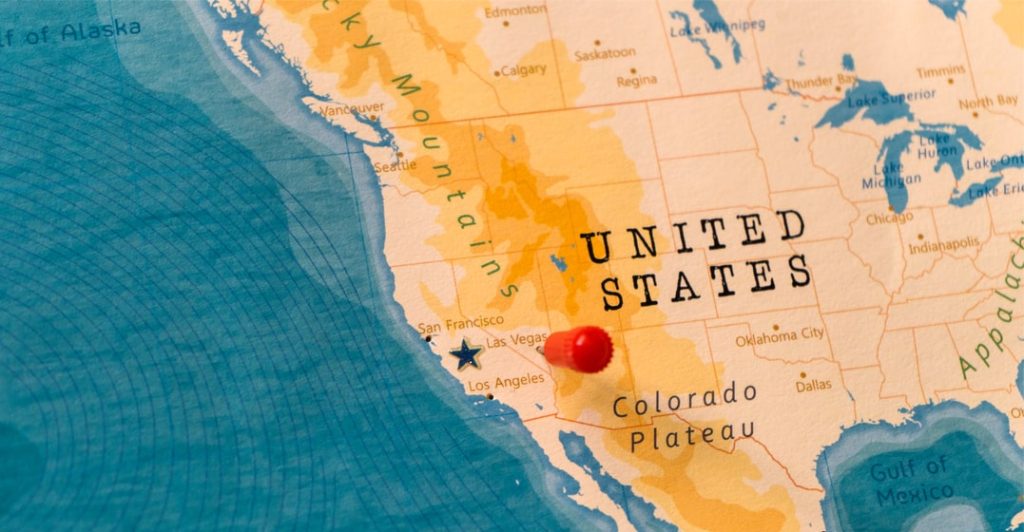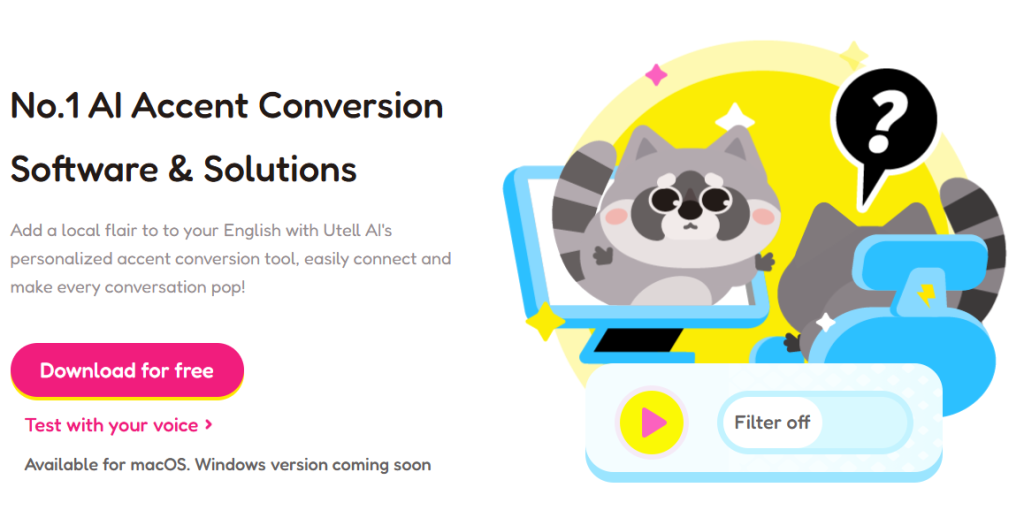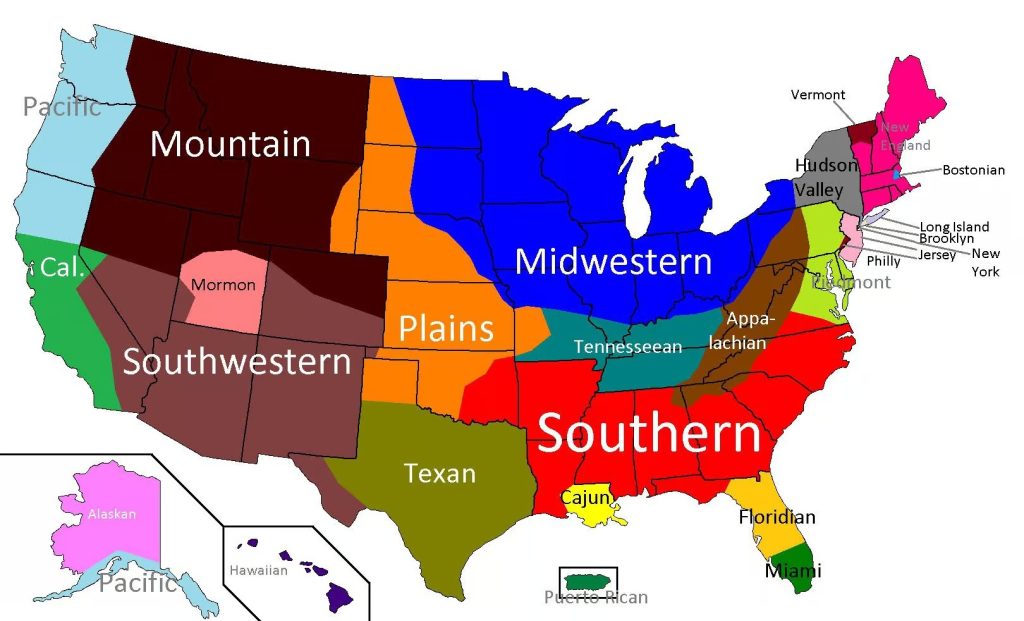When you use an american accent map, you see how people talk in many ways across the United States. You notice that learners often have trouble with different american accents. These maps help you find the differences more easily. Linguists say there are over 30 main dialects in the country. This means you will hear many unique american accents every day. With an american accent map, you can see and hear regional american accents in a clear way.
- American Accent Map Overview
- Key Regional American Accents
- Types of American Accent Maps
- How to Use American Accent Maps for Learning English Pronunciation?
- Bonus Tips to Improve Your American Accent
- FAQs
American Accent Map Overview
What Is an American Accent Map
An american accent map shows how people talk in different parts of the country. An accent is how someone says words. A dialect is more than that. It also includes grammar and vocabulary. This is important because people might say the same word in many ways. Where you are changes how words sound. The map helps you see these changes in pronunciation. You can find out where certain accents are common. You also learn how people sound in each region.
These maps help learners a lot. You get to see and hear many american accents. This makes your listening and speaking better. You start to see why people talk differently in different places. Social and geographic things change how accents grow. With an american accent map, you can choose which accent to study. This makes learning more focused and fun.
Some maps are called isogloss maps. They use lines to show where one accent stops and another starts. These lines show the borders between ways of speaking. You can find these maps in books, online, or in language apps.
How Accent Maps Work
Accent maps use colors, lines, and labels to show where accents are found. Joshua Katz made some of the most famous maps. He used a big survey about how Americans say words. His maps are in the book “Speaking American” and on the NC State University blog. He used real data to show how accents change in different places. Many teachers and students like these maps. They are easy to use and look nice.
Did you know? Joshua Katz’s maps started with a New York Times survey. People liked seeing how their way of talking matched others across the country!
You can find other accent maps in university research. But Katz’s maps are the most popular in schools and online. They help you see the big picture of american accents. It is easy to compare regions with these maps.
Accent maps do more than show where people say “y’all” or “you guys.” They also show small details, like how people say “mayonnaise” or “pajamas.” Here’s a table that shows how these maps display regional differences:
| Pronunciation Feature | Regional Variations | Description |
|---|---|---|
| Mayonnaise Syllables | 3 (Northern US), 2 (Southern US), Interchangeable | Shows where people use formal or simple pronunciations |
| “The City” Reference | NYC (Northeast), Chicago (Midwest), Boston (NE), Other | Maps show which city locals mean when they say “the City” |
| Mary, Merry, Marry | All same (South, Midwest, West), Different (Northeast) | Highlights vowel differences in these words |
| Vowel in “Bowie Knife” | [o] (South, Midwest, West), [u] (Texas, Maryland) | Shows where each pronunciation is common |
| Vowel in “Pajamas” | [ɑ] (South, East Coast), [æ] (North, Midwest, West) | Maps display how history shapes pronunciation in different regions |
Accent maps also show special features. Boston has nasal vowels. The South has long vowels. California has its own slang. Hawaiian Pidgin changes “th” to “d” or “t.” Cajun English in Louisiana uses French words. These details make each accent special.
When you use an american accent map, you see how accents spread and change. You can listen to samples and see patterns. You can even try to copy the sounds. This makes learning about american accents fun and helpful. If you want to sound more natural or understand others better, accent maps are a great tool.
Key Regional American Accents

Northeastern (New York, Boston)
The Northeastern region has some well-known american accents. New York and Boston accents are easy to notice in big cities. In New York, people might say “caw-fee” instead of “coffee.” They also say “fuhgeddaboudit” for “forget about it.” Boston accents drop the “r” sound, so “car” sounds like “cah.” The New England accent comes from early English settlers. These accents changed over time. But you can still hear old sounds in some neighborhoods.
Here’s a quick look at how these accents compare:
| Feature Category | Boston Accent Features | New York Accent Features | Contrast with Other Accents |
|---|---|---|---|
| Pronunciation | Non-rhotic (“cah” for “car”) | Vowel shifts (“caw-fee” for “coffee”) | Southern drawl, midwestern tones |
| Speech Rhythm | Slower, stretched vowels | Fast, energetic speech | More neutral in other regions |
| Vocabulary & Slang | “Dunks” for Dunkin’ Donuts | “Schlep,” “on line,” “slice” | Local slang reflects history |
Boston and New York accents both drop the “r” sound. But each one sounds different. New York accents are often nasal and lively. Boston accents sound more calm. People feel proud of these accents. New England’s history helped shape them.
Southern
In the South, you will hear southern accents everywhere. The southern american accent is famous for its “drawl.” Words are stretched out, and vowels sound longer. For example, “ride” can sound like “rahd.” Many southern accents make “pin” and “pen” sound the same. Some places drop the “r” at the end of words. But most southern accents keep the “r” strong. These accents have special stress and intonation. This makes them sound musical.
- Monophthongization: “Five” sounds like “faav.”
- Pin-Pen Merger: “Pin” and “pen” sound alike.
- Southern Drawl: “Pet” can sound like “pay-it.”
- Distinct vowels in “mary,” “merry,” and “marry.”
There are many types of southern accents. You can hear them from Texas to the Carolinas. In the mountains, appalachian accents add even more variety.
Midwestern
Midwestern accents are called “neutral” by many people. But they have their own features. You can hear these accents in Chicago, Detroit, and Minnesota. The midwestern region includes Illinois, Michigan, Wisconsin, and Ohio. The inland north accent is found near the Great Lakes. It changes vowels, so “cat” sounds like “kyat.” The north central accent is common in Minnesota. It has a sing-song sound and long vowels. Scandinavian languages influenced this accent.
- Elongated “ooh” and “eh” sounds (“toast,” “bake”)
- Full “r” pronunciation
- Vowel shifts in words like “cot” and “cat”
- Unique expressions and cadence
Some midwestern areas also have appalachian accents. You can hear different accents even in the same state.
Western
Western american accents cover a large area. This includes California, Nevada, and Alaska. These accents are rhotic, so you always hear the “r” sound. The cot-caught merger is common. “Cot” and “caught” sound the same. California accents have new vowel shifts, especially with young people. The mary-marry-merry merger is also common. All three words sound alike.
- Rhoticity (clear “r” sounds)
- Cot-caught merger
- Fronted “u” vowel (“goose” sounds more forward)
- Fewer marked features than other regions
California and western accents are less distinct than southern or new york accents. But you can still notice them if you listen closely.
General American
The general american accent is heard on TV and in movies. People think it is “neutral” and easy to understand. This accent says every “r” clearly. It does not have strong regional features. The jaw is relaxed, and the stress is natural. There is no nasal “twang.” The general american accent started in the central U.S. People moved west and mixed different american accents. Now, it is the standard for news, schools, and media.
- Rhoticity (all “r” sounds pronounced)
- No strong regional features
- Warm, clear, and natural sound
- Used in media and education for clarity
Some people think this accent has no identity. But it mixes features from many american accents. Every speaker adds their own style. There is no way to speak without any accent at all.
Types of American Accent Maps
Interactive Digital Maps
You can find American accent maps online. These maps are easy to use. You can zoom in on any region. You see how people talk in different places. The Langscape map is popular in language classes. It has over 6,000 markers for native languages. These languages help shape American accents. Click a marker to learn about the language and its history. You also see how it changes the local accent. Another tool is the North American English dialects map. This map shows what accents are in each area. You can see how accents change from state to state. These digital maps make learning about accents fun.
Tip: Listen to audio samples on these maps. You will hear real people using their local accent!
Linguistic Atlases
Linguistic atlases show how accents work across the country. The Phonological Atlas of North America is one example. It is also called the Telsur Project. It collects data from many cities. The atlas maps vowel sounds and shows how accents change over time. You can see where Inland North, South, West, and Midland accents begin and end. The Atlas of North American English is another big project. It shows how things like the Northern Cities Vowel Shift or cot–caught merger affect speech. The Linguistic Atlas Project has collected accent data for over 90 years. It keeps records of vocabulary, grammar, and pronunciation. You can see how accents have changed.
- Major linguistic atlases:
- Atlas of North American English
- Linguistic Atlas Project (LAP)
Audio Sample Maps
Audio sample maps let you hear real accents. You get recordings from people in different regions. You can listen to how someone from Boston says “car.” You can hear how a Texan says “y’all.” Some maps have phonetic notes and YouTube clips. These clips come from movies or interviews. This helps you match the sound to the region. You learn about accents by hearing them, not just reading. Audio sample maps help you copy the accent you want.
Note: Listening to real voices helps you understand the rhythm and melody of each accent.
Traditional Printed Maps
Printed maps are still useful for learning accents. You can find them in textbooks or language guides. They use colors and lines to show where accents are spoken. Printed maps have short descriptions of each accent. You can use them to compare accents side by side. They do not have audio, but they give a big-picture view of accents across the country.
| Map Type | What You Get | Best For |
|---|---|---|
| Interactive Digital | Clickable, zoomable, audio samples | Exploring, listening |
| Linguistic Atlas | Detailed data, sound changes | Research, deep learning |
| Audio Sample | Real voices, phonetic notes | Practice, imitation |
| Traditional Printed | Visual overview, easy reference | Quick study, comparison |
You can use all these accent maps to learn about American accents. Each map helps you discover new ways people speak. You will understand the types of accents you might hear every day.
How to Use American Accent Maps for Learning English Pronunciation?
Ready to boost your spoken English? American accent maps can help you do just that! These maps make it easy for you to spot how each accent sounds in different parts of the country. You can use them to listen, practice, and even compare your own accent with native speakers.
Here’s a simple way to get started:
- Pick a Region
Choose an area on the accent map that interests you. Maybe you want to sound like someone from New York or Texas. Each accent has its own charm. - Listen to Samples
Many accent maps have audio clips. Play these samples and pay close attention to how people say certain words. Notice the rhythm, stress, and melody in each accent. - Repeat and Record Yourself
Try to copy the accent you hear. Record your voice on your phone. Then, play it back and compare it to the sample. This helps you catch small details in your accent. - Use a Table to Track Progress
| Accent Region | Words Practiced | Progress Notes |
|---|---|---|
| Southern | y’all, pen | Getting smoother |
| Boston | car, park | Need more practice |
| California | dude, totally | Sounds natural |
Tip: Don’t worry if your accent isn’t perfect right away. Every accent takes time to master. Keep practicing, and you’ll notice real improvement.
You can use accent maps every day. Try a new accent each week. Mix listening, speaking, and recording. Soon, you’ll feel more confident using any American accent in real conversations.
Bonus Tips to Improve Your American Accent
While American accent maps are invaluable for understanding regional speech differences, truly mastering a new accent—especially transitioning from an Indian to an American accent—often requires targeted practice and the right technological tools. That’s where accent conversion software like Utell AI comes into play.

Transform Your Original Accent to American Accent with Utell AI
If your goal is to speak English with a clear, authentic American accent, Utell AI is one of the most effective solutions available. This advanced accent conversion platform leverages artificial intelligence to help you soften, correct pronunciation differences between Indian English and American English.
TRY UTELL AI
Best Accent Conversion Software
Advantages of Using Utell AI for American Accent Transformation
When it comes to improving your American English accent, Utell AI stands out as a revolutionary tool that uses the latest in artificial intelligence and voice technology. Here’s what makes Utell AI a top choice for transforming your pronunciation:
1. Instant, AI-Powered Accent Conversion
Utell AI provides real-time accent conversion from Indian English to authentic American English. As you speak or upload a recording, Utell AI instantly transforms the accent, letting you hear exactly how your words would sound with a natural American pronunciation.
2. No Need for Tutors or Complex Software
With its user-friendly design, Utell AI eliminates the need for expensive accent coaches or complicated apps. You can access powerful accent transformation tools right from your browser or mobile device, anytime and anywhere.
3. Confidence Boost for Communication
By allowing you to practice with real-time, AI-generated feedback, Utell AI quickly builds your confidence. Whether you’re aiming for better interviews, presentations, or social interactions, you’ll feel more comfortable speaking English in the American style.
Integrating Utell AI into your spoken English practice—alongside resources like American accent maps—gives you a powerful, modern way to sound more like a native speaker.
You gain so much when you use an accent map to learn spoken English. Each accent tells a story about history, culture, and people. When you listen to different accents, you start to understand why people sound unique. You also learn to avoid bias and respect every accent you hear. Practice with accent maps helps you spot small changes in sound. You build confidence as you try each accent. You notice that a neutral accent can help you in school, work, and daily life. Accent practice makes you a better listener and speaker. You can join groups, watch shows, or use apps to hear every accent. Try to use an accent map every day. You will soon find that every accent you learn opens new doors. Keep exploring, keep practicing, and enjoy every accent you discover!
FAQs
What is an american accent map, and how can it help you?
An american accent map shows where people speak with different accents. You can listen to how people talk in each place. This tool helps you notice the differences in accents. It also lets you practice the accent you want to learn.
How do you choose which regional american accents to study first?
Begin with accents you hear a lot or ones you enjoy. Many learners start with the general american accent, southern american accent, or new york accent. You can try more accents as you get better.
Can you really sound like a native speaker by using accent maps?
You can get much closer to sounding like a native! Listening to real voices and practicing with an american accent map helps you copy the rhythm and sounds. Over time, your accent will sound more natural and clear.
Why do some accents, like the new england accent or philadelphia accent, sound so distinctive?
History, culture, and where people live shape special american accents. The new england accent, boston accents, and philadelphia accent all sound unique. This is because of the people who moved there and how language changed over time.



